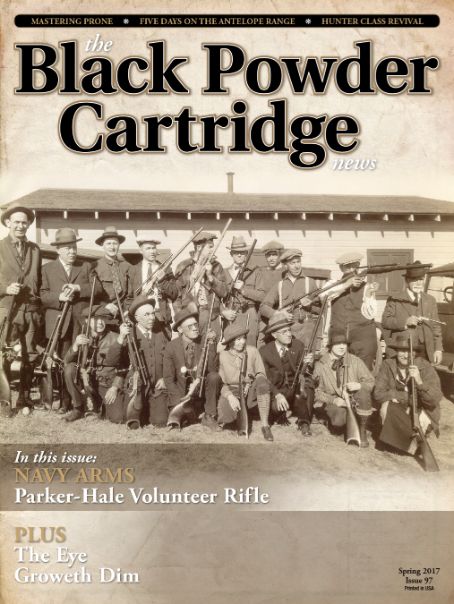Thoughts on the .43 spanish and the Remington Rolling-Block Rifle
feature By: Bob Shell | April, 17
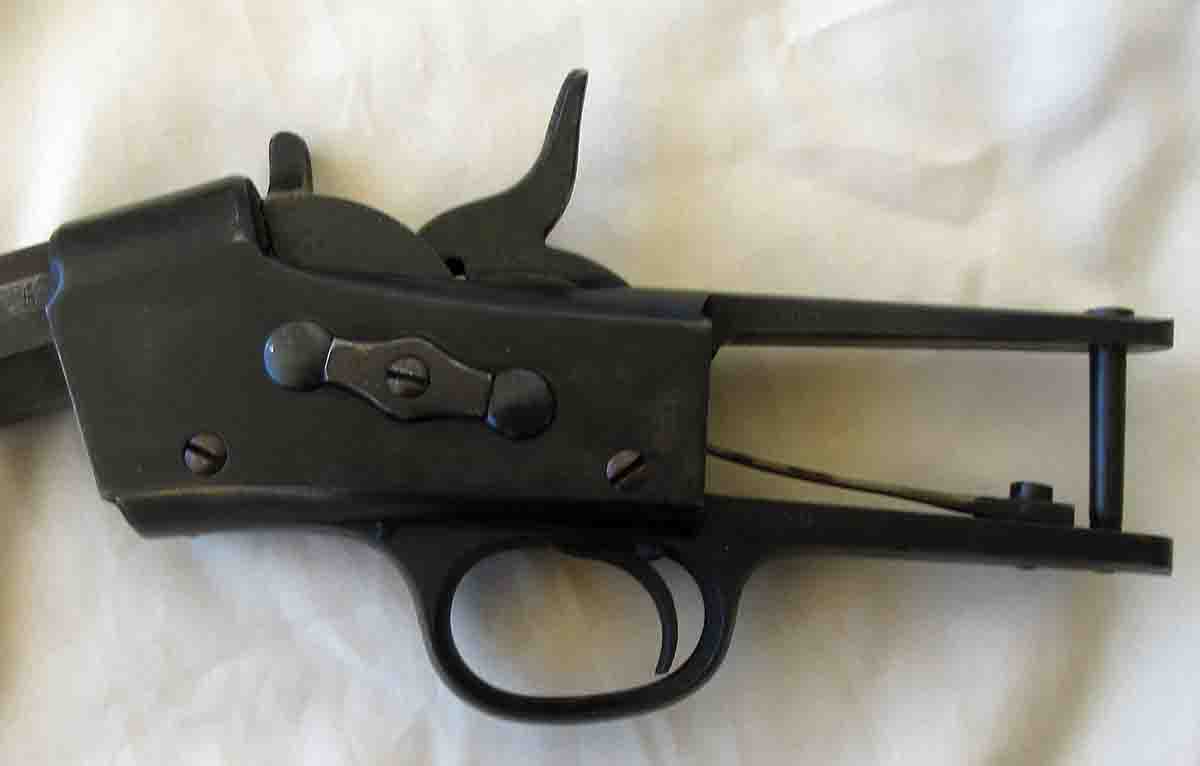
During the 1860s, many innovations in both guns and ammunition were developed and employed by the military powers of various countries. Breech-loading firearms were one of the big leaps in technology, and of those, one of the most interesting is the “rolling-block” rifles and handguns. An American designed the action, and Remington had the patent. The United States military evaluated them but chose the trapdoor Springfield instead, although there were military pattern rolling-block rifles produced in .50-70 and .58 Berdan rimfire. The U.S. did, however, use a .50 Army and Navy rolling-block handgun. Some other countries bought rolling blocks for military or sporting purposes as well.
Joseph Rider, an employee of Remington, who followed up on the original idea, invented the rolling-block action in 1866. Leonard Geiger designed the original concept. He applied for and was granted a patent in 1863. Remington saw the potential of the design and hired Geiger along with Joseph Rider, their chief engineer, to improve the design. In 1866, Sam Remington took the rolling block “on the road” to demonstrate its good features. The Spanish were impressed but wanted to do their own testing. Therefore in 1866, they purchased 10,000 .58 rimfire rifles for their own evaluation. They subjected them to saltwater and humidity testing and were impressed. Since Spain still owned such places as Cuba, the Philippines and Puerto Rico, the ability to withstand humidity was important to them. They also wanted their own cartridge, so the .43 Reformado was
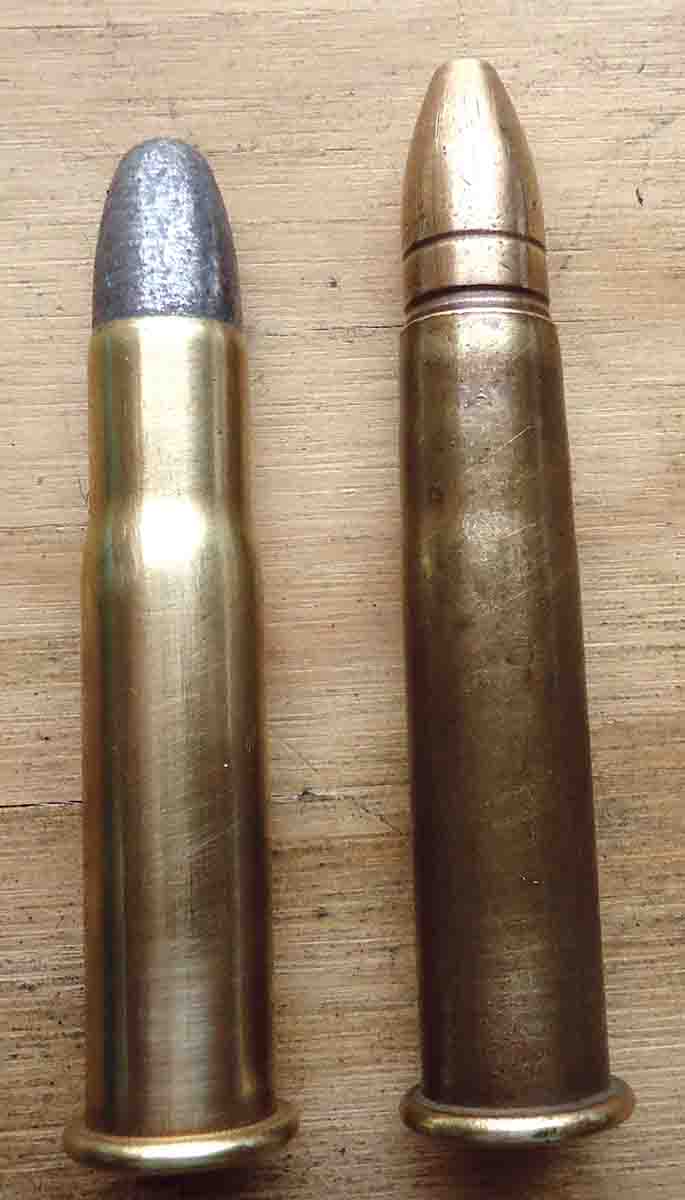
brought out. It was a straight-walled case and used a .454-inch diameter bullet weighing 396 grains; 74 grains of powder propelled the bullet 1,280 fps.
In 1869 the Spanish purchased 75,000 rifles and 10,000 carbines. In 1898, a quantity of Reformado ammunition was found packed in crates at the battle of San Juan, Puerto Rico, though it wasn’t being used to any real extent. The jacketed bullets, however, were corroded because of the humidity. The story got out that the bullets themselves were purposely poisoned, thus they became known as the “.43 Poison.”
The .43 Spanish cartridge was used extensively and was feared by the Americans. A large-caliber, slow-moving bullet is always effective against enemy soldiers or animals. When smokeless powder rounds first came out, they extended the range of rifles, but the small-caliber, metal-jacketed bullets were not as effective as the large-caliber ordnance. The full-patch bullets penetrated extremely well but didn’t do a lot of damage. That was especially true with the various 6.5mm rifles that were developed in the 1890s. There were some ways to make the small-caliber bullets more effective, but that is another story. In many areas, the .43 Spanish was regarded as useful ordnance as late as 1910.
The Remington rolling block was the result of several years of development, as some of the earlier models were more complicated and not as practical. They were known as Split Breech Remington Carbines. The final model has a billet of solid steel with a centrally hung hammer. The hammer in its forward position acted like a breechblock, rotating on its solid-action pin. When the breechblock is pulled back, the extractor comes out and extracts the case.
It always works, and like the rest of the gun, it is ingenious and simple. There is no ejector, but the case is extracted enough that it is easy to grasp. The final product is an ingenious design and in fact saved Remington from financial ruin. There were about 20,000 made in .58 Berdan rimfire and .56-50 Spencer. It was, however, too late to utilize them in the American Civil War.
Throughout 1865, Rider worked on various improve-ments and eventually invented the rolling-block action as we know it now. Over the years, they became quite popular for military and sporting use as their virtues became apparent. While not universally adopted by the U.S. military in rifles, pistols were chambered for the .50 Army and Navy from 1867 to 1873, prior to the .45 Colt being adopted. The military bought about 12,000 pistols, and many more were made for the civilian market. The U.S. military ordered some in .46 and .50 caliber, but before they could be delivered the Civil War ended. The government adopted the Springfield trapdoor action over the rolling block, first in the .50-70 then the .45-70 in 1873.
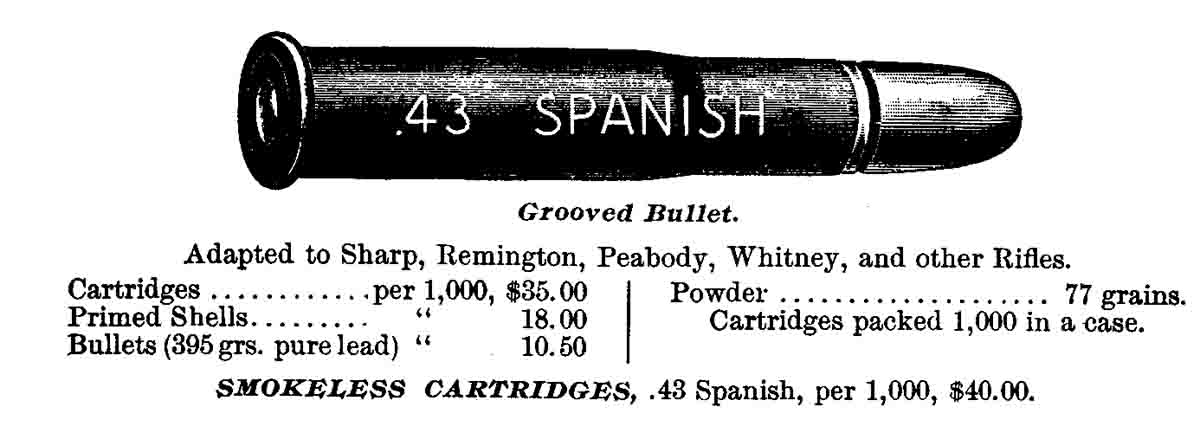
The military did experiment with some in the .58 Berdan rimfire calibers chambered in the rolling block and Allin conversion trapdoors. This was done to save money by converting muzzleloaders to cartridge arms using the trapdoor action. This was a widespread practice at that time, and as a result there were many interesting conversion rifles produced. Remington, however, kept improving rolling blocks, having patents as late as 1871. The Paris Exposition of 1867 declared the rolling block “the finest rifle in the world” at that time, giving it a silver medal. An experienced shooter could fire over 15 rounds per minute, which was exceptional for that period.
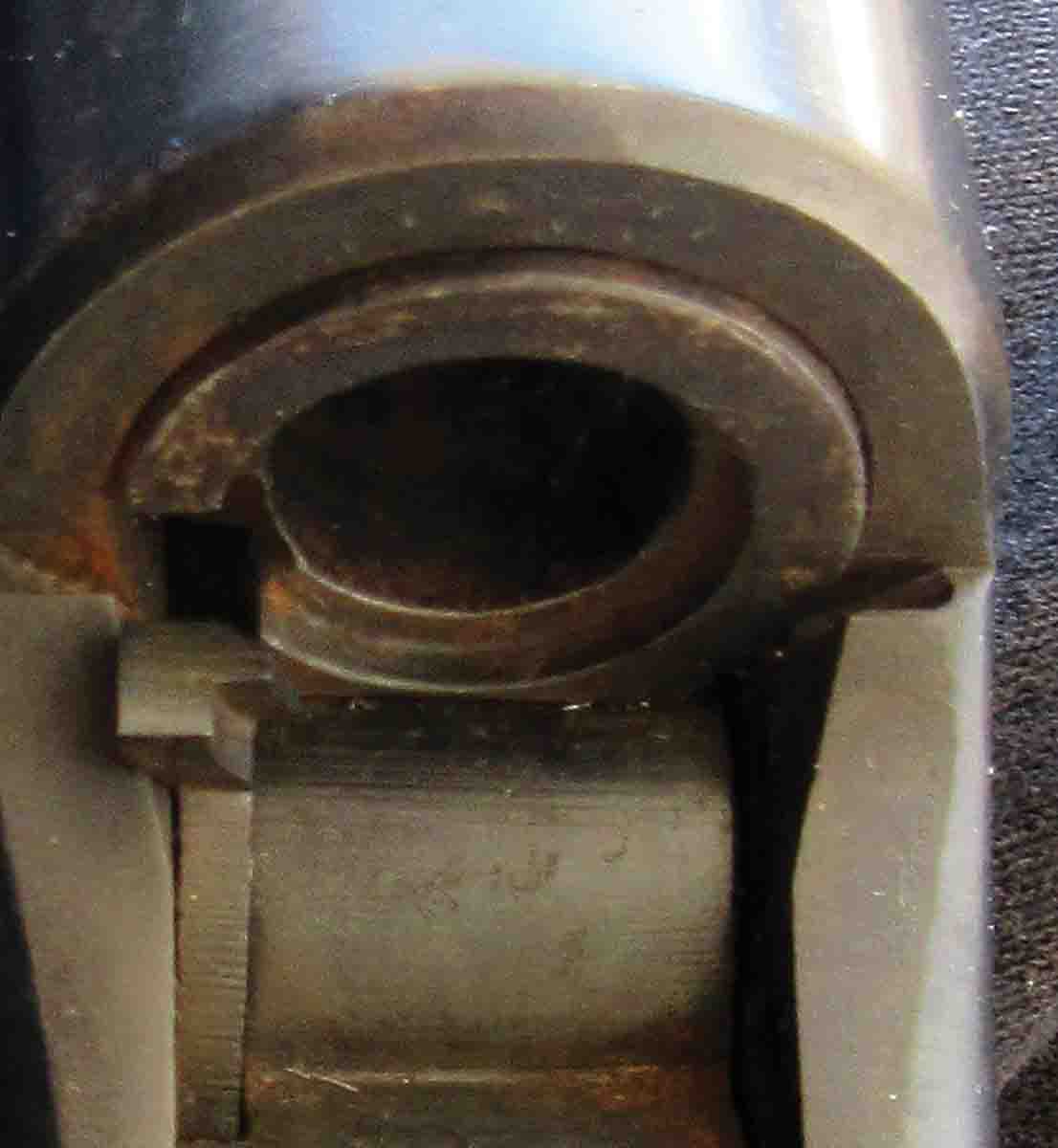
There are also some rolling-block rifles chambered for the .45-70 and .50-70 rounds, some original and probably some rebarrel jobs, though a quantity was ordered by the U.S. military. As a note, the rifles were used during a battle in 1871 off the Korean coast where some American sailors were held. The Kanghwa Island fort was taken back and the sailors freed. The rolling blocks were chambered in .50-70 and performed very well. This was the first time Americans used a breech-loading rifle in a foreign conflict.
The Remington did have some popularity in the West for buffalo hunting and was chambered in various heavy calibers. Target shooters also liked the Remington rifle, as it was accurate and strong. In fact, according to some reports, the Liege Proof House in Belgium loaded one with 750 grains of powder, plus 40 bullets and wads in the barrel. Upon firing, there was no reported damage to the rifle. Others tried to put in tight-fitting bullets and leave in a cleaning rod, then shooting it. Again, no damage was reported. Torture and rust tests showed that it could stand up to quite a bit of abuse.
The rolling-block action is simple and rugged, which makes it desirable for shooting and hunting. In fact, I have one chambered for the 12.17x44 centerfire round. The gun is rough looking and lacks an extractor. Somewhere it fell off, so I use a rod to push the empties out. In addition, there is some pitting in the rifling, but in spite of all that, it can nearly put bullets in the same hole at 50 yards. In this case, looks don’t count.
Years after the rolling blocks were considered obsolete, various countries used them in skirmishes, even as late as the 1940s. Many of the Latin American countries were involved in small wars, and the .43 Spanish, among other calibers, was used. The 7x57 rolling block was also popular, as Mexico and other countries fielded that round. There were various reasons why older rifles were kept in service, and financial considerations may very well have played a part. Some leaders did not trust the newer firearm designs, as they had not been tested on the battlefield. The rolling-block rifle’s reputation for being rugged and reliable endeared them to various military forces.
The Spanish, who had colonies in various tropical areas, knew the importance of weatherproof arms and submitted the rolling block to various tests regarding moisture and saltwater. The rifle came through with flying colors, and in 1868 they bought it in the 11mm Reformado chambering. It was the first rifle to utilize a jacketed bullet. A few years later, they went to the .43 Spanish caliber and kept that for some years.
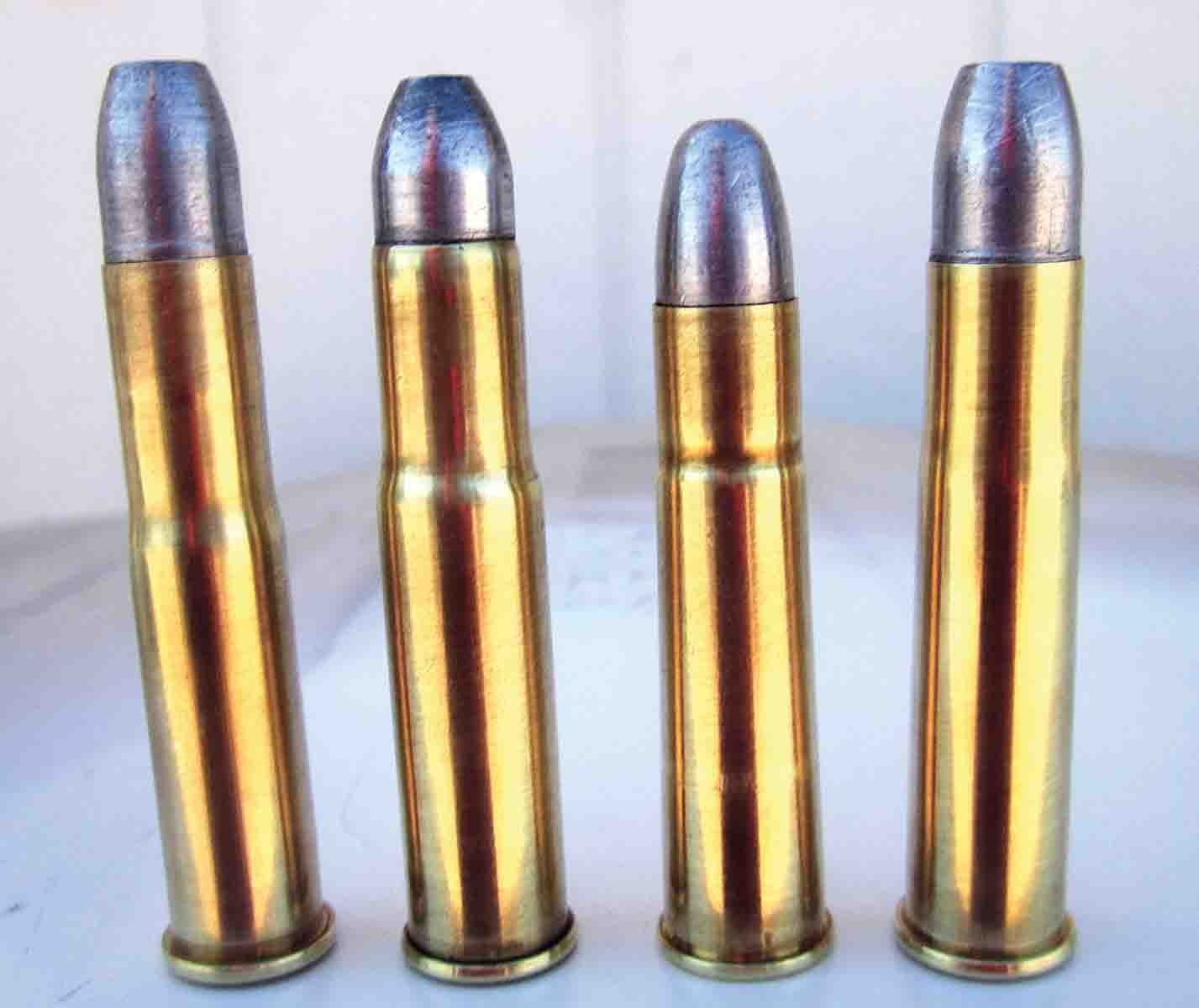
By 1870, the countries of Sweden, Denmark and Norway understood the virtues of the rolling block and obtained the rights from Remington to produce them. The Danes used an 11mm rimfire round for their military service, because they had a lot of ammunition in government stocks. Later an 11.17x44 was made in centerfire and some rifles featured a reversible firing pin in order to utilize both rounds. The rolling block was quite popular in Scandinavia for sporting purposes and was chambered in various rounds, including some smoke-less. The 8x58R for rolling-block sporters was popular and the military adopted it, but in the Krag-Jørgensen rifle.
The .43 Spanish rounds were pretty typical for that period of time. It is a hard-hitting round and is effective at close to moderate ranges. It is very similar in power to the 11x60 Mauser round, although they are not interchangeable. Bullet weights usually go from 370 to 385 grains, though some other weights can be found or made. Today it would be suitable for some large game at woods ranges. The rifle is well made and is capable of good accuracy. The main detriment to good accuracy is the heavy trigger encountered in some rolling blocks. I have several where the triggers range from good to horrendous. The bullets used are the typical weights that were used back in the nineteenth century. While black powder was the propellant in use, the strong action allows use of moderate charges of smokeless powder. I do not recommend increasing the smokeless loads, since the rifles are over 100 years old. The military ballistics are adequate for any use today. Just to give the shooter an idea as to effectiveness, a .50-caliber Hawken muzzleloading rifle propels a 370-grain Maxi ball around 1,300 fps, which is highly regarded for deer hunting in the woods. A .43 Spanish propels a 370-grain bullet a couple hundred feet per second faster than the Hawken. In addition, the Spanish bullet is smaller in diameter, which will give it a higher sectional density. That translates into increased range and penetration.
The .43 Spanish is one of the more popular rolling-block calibers, and with a bit of searching, reloading components are available. During the black-powder era, the .43 Spanish chambering accounted for 70 percent of the production. One can purchase .43 Spanish brass from reliable sources, such as Buffalo Arms or Dixie Gun Works. Jamison Brass produces cases for the .43 Spanish, and they are good quality items. For the non-reloader, loaded ammunition is also available from these sources. If one likes a challenge, the .43 Spanish can be made from .348 WCF brass. Special equipment is needed, because the .348 has to be swaged down, which takes some real leverage to accomplish. You would be better served by buying pre-formed brass. Dies are readily available, and if moderate loads are used, the brass will last a long time. With black powder, it is advisable to wash the cases in soap and water after firing, as that propellant is hydroscopic. There is no reason to use jacketed bullets even if available, as they are no more accurate than cast bullets. With the softer steels used in the nineteenth century, jacketed bullets would wear out the rifling much sooner.
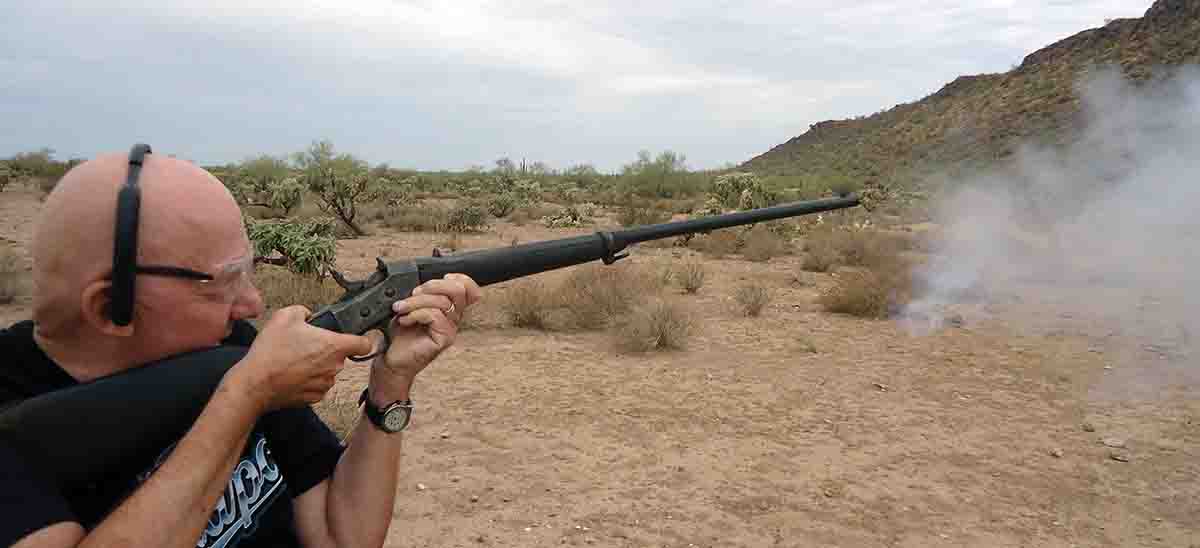
There are a several companies that can supply moulds suitable for the Spanish round, Buffalo Arms and NEI being the main sources. They may also have some moulds with and without gas checks in addition to bullets similar to the originals. The normal diameter for the bullet is .439 inch, although you should slug your bore, as variations do exist. The .43 Spanish is capable of good accuracy with the correct components. As a note, Accurate 5744 is a great powder for many of the obsolete guns. It ignites easily and gives similar velocities to the black-powder loads without stressing the gun. I would not recommend trying to increase the velocities, as these rifles can be dangerous with excessive loads.
Rolling-block rifles are still avail-able, but like most obsolete guns, prices are going up. Uberti still makes a rolling block that is chambered for various vintage and modern calibers. Unfortunately, the .43 Spanish isn’t offered. At some point, I plan to get one of the Uberti rifles, as I am a big fan of rolling-block firearms.
During the years that I have been reloading, many types of single-shot rifles have been used. Most of them have been good, but there is just something about the rolling-block action that fascinates me. Some years ago, I had a chance to shoot a .50 Navy pistol, and it was really a nice experience. I made the ammunition and tried to buy the pistol, but the owner did not want to part with it. Who can blame him?
Reloading Component Sources:
- Buffalo Arms
- 660 Vermeer Court
- Ponderay ID
- 1-208-263-6953
- www.buffaloarms.com
- Jamison Brass (Captech)
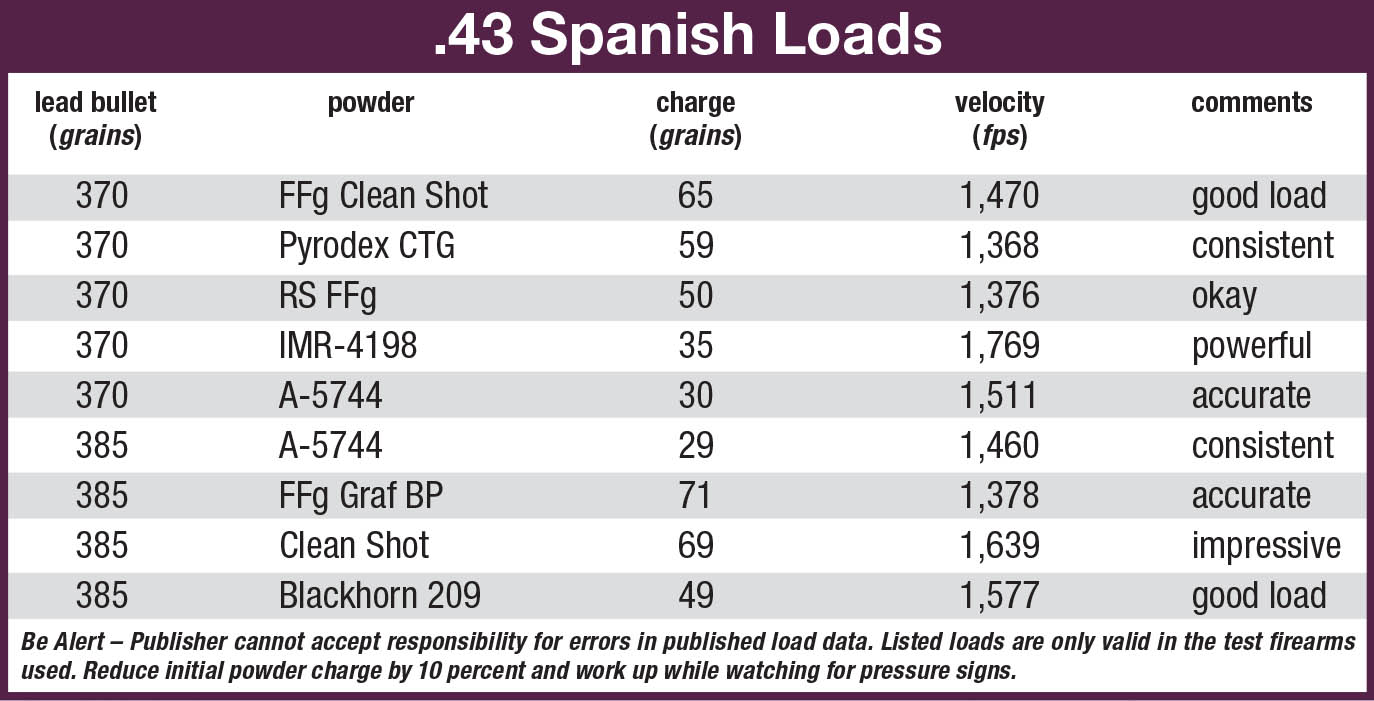
- 2441 Dakota Craft Drive
- Rapid City SD 57701
- 1-605-791-1974
- NEI Moulds
- PO Box 370356
- El Paso TX 79937-0356
- 1-915-772-0259
- Email: nei@neihandtools.com
- Dixie Gun Works, Inc.
- 1412 W. Reelfoot Avenue
- Union City TN 38261
- 1-800-238-6785
- www.dixiegunworks.com


